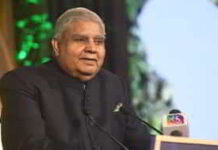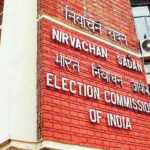1.The Reserve Bank of India (RBI) will soon issue new 100 Rupee notes with motif of which UNESCO World Heritage site?
[A] Sanchi Stupa [B] Rani Ki Vav [C] Hampi [D] KonarkCorrect Answer: B [Rani Ki Vav]
Notes: The Reserve Bank of India (RBI) will soon issue new Rs 100 denomination currency notes in the Mahatma Gandhi series. The base colour of the new denomination is lavender and contains other designs, geometric patterns aligning with the overall colour scheme both at the observe and reverse. The dimension of the banknote will be 66m x 142 mm which is the same size as that of the Rs 200 note. The obverse (front) side of the note contains a see-through register with denominational numeral 100, a latent image with the numeral and also a Devanagari version of the same. The new banknote has a motif of ‘Rani Ki Vav’ (the Queen’s Stepwell) on the reverse, which is a UNESCO World Heritage site. The heritage site is a stepwell located on the banks of Saraswati river in Patan, Gujarat. It was built as a memorial to an 11th-century king Bhima I .
2.Which state government has released its first-ever tribal atlas to highlight the tribal demography of the state?
[A] Manipur [B] Madhya Pradesh [C] Odisha [D] Tamil NaduCorrect Answer: C [Odisha]
Notes: On July 23, Chief Minister Naveen Patnaik released the first-ever tribal atlas of Odisha — a set of maps and statistics – to highlight the tribal demography of the state. The atlas has been brought out utilising the data of Census 2011 and other relevant statistics, which is said to be the first of its kind in the country. The atlas has been prepared by the SC & ST Research and Training Institute in collaboration with Academy of Tribal Language and Culture. It has been edited by Prof A B Ota, director of SC & ST Research Institute, and reviewed by development commissioner R Balakrishnan. The atlas displays the salient features of tribal population of Odisha with a series of maps, charts and diagrams. It contains 60 plates pf maps along with corresponding graphs and diagrams which portray the distributional aspects of the Odisha’s tribal population, ecological setting of the tribal habitats, their socio-cultural attributes such as linguistic/dialectical affinity, sex composition and literary levels.
3.The Union government has constituted which high-level committee to suggest laws against mob lynching and violence?
[A] A.K. Dhasmana committee [B] Rajiv Gauba committee [C] Bhaskar Khulbe committee [D] Inderjit Singh committeeCorrect Answer: B [Rajiv Gauba committee]
Notes: On July 23, the Union government has constituted a high-level committee to suggest laws against mob lynching and violence. The high-level committee, headed by the Union Home Secretary Rajiv Gauba, will submit its suggestions to the Home ministry within 4 weeks. Beside this, the government has also constituted a Group of Ministers (GoM), headed by Home Minister Rajnath Singh, to consider the recommendation of the high level committee. The GoM will then examine the report and submit its suggestions to Prime Minister Narendra Modi. The move came after the Supreme Court asked the government to enact a law to deal with such incidents, terming them as “horrendous acts of mobocracy”.
4.The first meeting of the India-Bangladesh Joint Committee on Border Haats was held in which city?
[A] Agartala [B] Dispur [C] Guwahati [D] ShillongCorrect Answer: A [Agartala]
Notes: The first meeting of the India-Bangladesh Joint Committee on Border Haats was held in Agartala, Tripura on July 22-23, 2018. In the meeting both sides noted the positive impact of Border Haats on the livelihoods of the people living in areas adjoining the Haats. Extensive discussions were held on issues related to review of operations of the four functional Border Haats and suggestions for improvement, timeline for setting up the six additional Border Haats that had earlier been agreed to by both sides and the roadmap for further expansion of Border Haats. It was agreed that the next meeting would be held in Bangladesh on mutually agreed dates. The Joint Committee also visited the Border Haat at Kamlasagar (Sipahijala District, Tripura) – Tarapur (Brahmanbaria, Bangladesh) on 22 July 2018, appreciated its vibrant functioning and noted the need for improvement of infrastructure.
5.The Lok Sabha has passed the Negotiable Instruments (Amendment) Bill, 2017 on cheque bounce cases. The bill shall amend which act to resolve the issue?
[A] Negotiable Instruments Act 1881 [B] Negotiable Instruments Act 1882 [C] Negotiable Instruments Act 1880 [D] Negotiable Instruments Act 1884Correct Answer: A [Negotiable Instruments Act 1881]
Notes: On July 23, the Lok Sabha passed the Negotiable Instruments (Amendment) Bill, 2017 that allows a court hearing a cheque bounce case to direct the drawer — the person who wrote the cheque — to pay interim compensation to the person who filed the complaint. The interim compensation, to be paid within 60 days of the court’s order, can be up to 20% of the value of the cheque. The court may direct the payee to repay the interim compensation, with interest, if the drawer is acquitted. Now , the bill will go to the Rajya Sabha for its nod. If bill gets Parliament’s nod, it will preserve the sanctity of cheque transactions by stopping the practice of people trying to deliberately delay cases through filing of appeals and obtaining stay a on proceedings. The bill, which amends the Negotiable Instruments Act 1881, is aimed to reduce the number of cheque dishonour cases pending in courts.
















